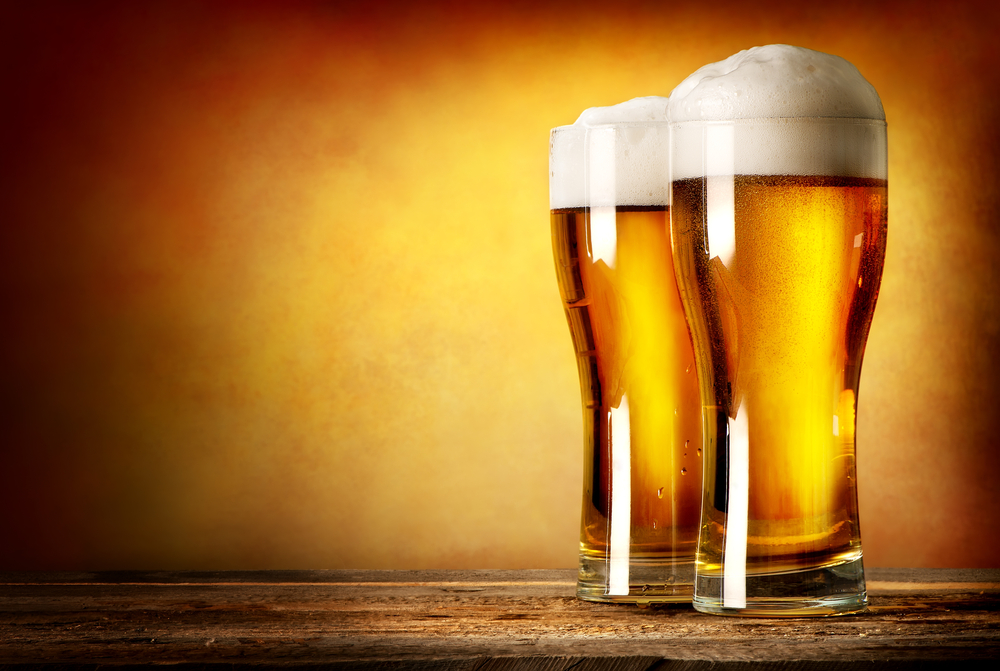AB InBev’s Persistence Pays Off

Please note that we are not authorised to provide any investment advice. The content on this page is for information purposes only.
The two biggest beer producers in the world are set to merge after SABMiller accepted Anheuser-Busch InBev’s US$104 billion offer. The deal will create a brewer selling one in every third beer worldwide, with brands like Budweiser, Stella Artois, Grolsch, Miller, Corona, and Peroni under its umbrella.
As with all mergers and acquisitions, the idea is that by joining forces the new bigger-and-better company can implement economies of scale and scope, as well as increasing its market share – all resulting in greater profits. However, there are no guarantees.
The two biggest beer producers in the world are set to merge after SABMiller accepted Anheuser-Busch InBev’s US$104 billion offer. The deal will create a brewer selling one in every third beer worldwide, with brands like Budweiser, Stella Artois, Grolsch, Miller, Corona, and Peroni under its umbrella.
As with all mergers and acquisitions, the idea is that by joining forces the new bigger-and-better company can implement economies of scale and scope, as well as increasing its market share – all resulting in greater profits. However, there are no guarantees.
Research consistently finds that between 60% and 80% of acquisitions fail to deliver the expected benefits and more than 50% destroy shareholder value. The reasons usually lie in forcing the buyer to pay too much for the company it is acquiring, botched integration, and an over-estimation of the merger’s benefits.
Belgian brewer AB InBev has both a reputation and demonstrable track record for being able to effectively extract savings when acquiring new assets. One example is when InBev took over Anheuser-Busch in 2008. However, mergers are a costly exercise for the bidder’s shareholders (and potentially customers). It is likely only the target’s shareholders who will be the main beneficiaries.
Who really benefits?
In major manufacturing operations, economies of scale can be enormous which means streamlined breweries to focus on the largest and most modern. Economies of scope – where it is cheaper to produce a range of products together than individually – will be substantial too. In terms of personnel, for example, head offices and country management teams are likely to see integration. In addition, the combined purchasing power of the new bigger company should also realise substantial savings.
The deal will also give AB InBev access to growth markets in Africa and Latin America where it is does not have representation. Management will expect to benefit, as they will preside over a much greater business resulting in greater pay, power, and status.
However, if drinkers are hoping the cost savings pass on to them I feel they will be sorely disappointed. They will probably find that choice will diminish as well. Indeed greater market power arising from mergers usually results in higher prices.
Thus, a major issue facing the merger of the world’s two largest brewers is the competition authorities, with antitrust regulators in the US likely to scrutinise the deal. There is therefore a strong likelihood that they will have to dispose of some of their brands. For example, when AB InBev took over Grupo Modelo in 2013 it had to sell some of Modelo’s US assets, including Corona.
It is also probable that product ranges will undergo review and see reductions to allow for greater investment in marketing the retained brands. This could see AB InBev having to divest a well-known brand, as it will have to appease the US competition authorities.
Shareholder returns
A combination of reasonably strong stock markets and low interest rates together with cash rich potential investors are largely responsible has seen an increase in mega-mergers, with this being hot on the heels of LaFarge’s US$50 billion merger with Holcim.
In the case of AB InBev a global beer market showing little growth may well be the major driving force. The market is largely flat and in some regions, it is declining as other beverages such as wine continue to penetrate. Microbrewers and their highly differentiated craft ales also continue to make progress. Consequently cost, product and distribution rationalisation become an attractive way of increasing shareholder returns.
AB InBev has had to transfer many of the synergy benefits in cost savings to SABMiller’s shareholders through raising the price five times to win approval. They have clearly been structuring the offer to suit the two main shareholders who face a major tax bill if the deal was cash. The offer is partially unlisted shares, which will allow shareholders to take profits at some stage in the future.
AB InBev’s determination to do this deal may ultimately be a problem for them. Advisor fees will run to hundreds of millions of pounds, much of which will be dependent on the deal succeeding. In addition, when the stakes are so high, the impartiality of the advice they are getting is open to question. Mergers are costly, with AB InBev’s track record expect substantial redundancies, and cost savings over the next year.
Merger of the world’s largest brewers comes at a high price is republished with permission from The Conversation





